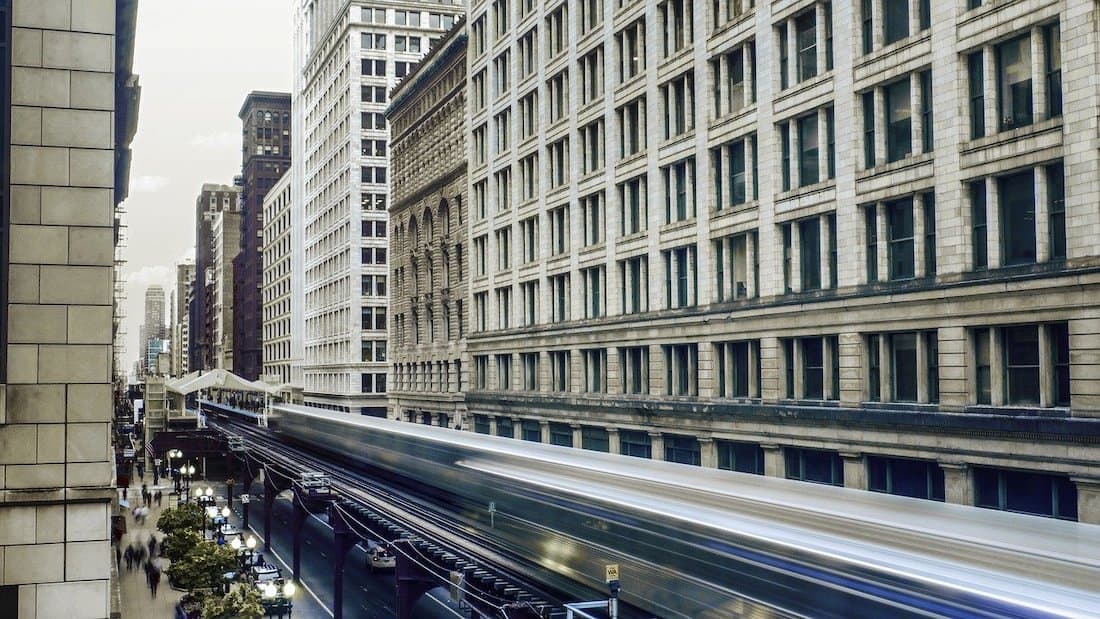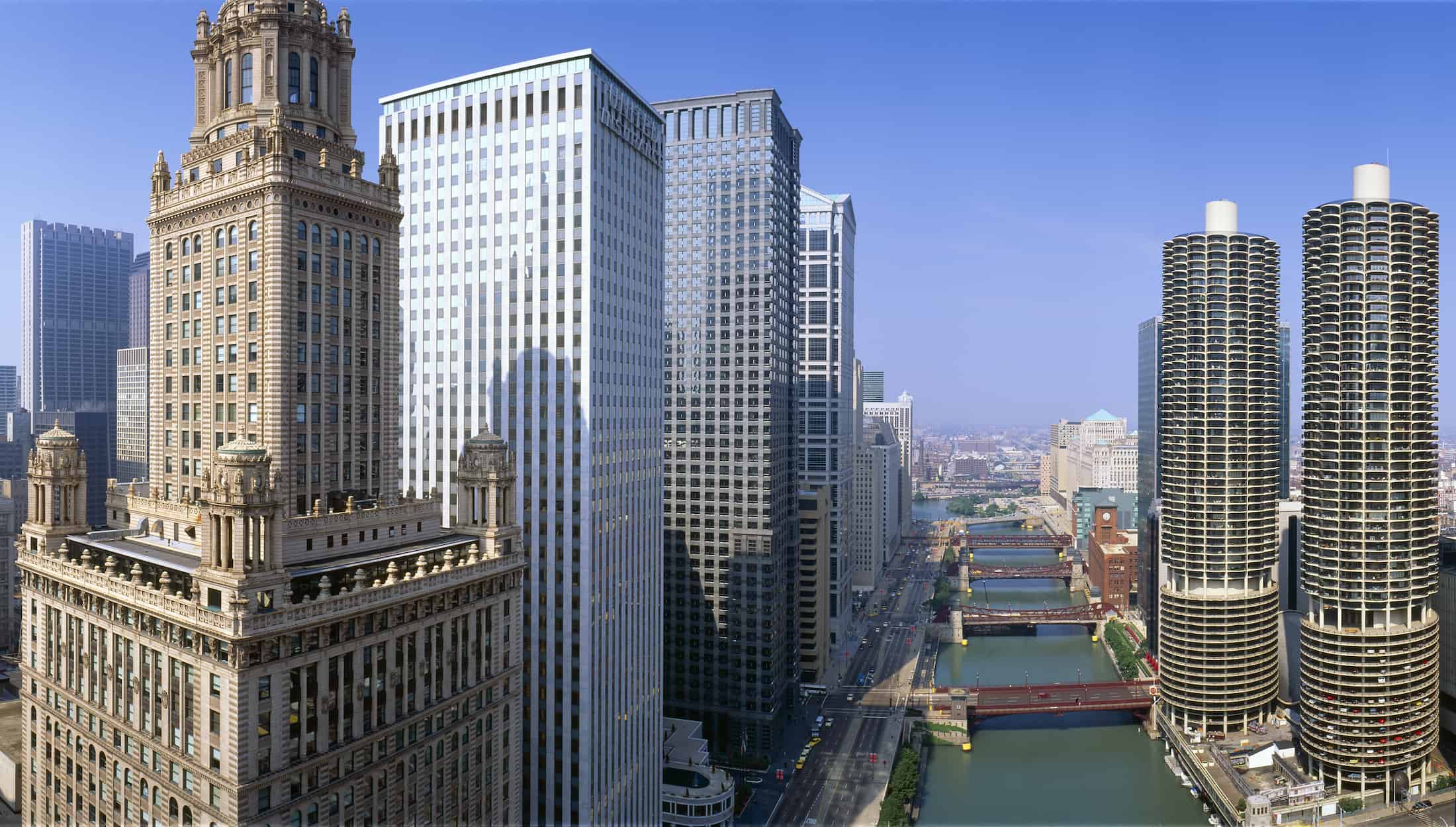Living in Historic Chicago Buildings
From the Ridge Historic District filled with homes designed by icons like Frank Lloyd Wright to the 1869 Chicago Water Tower, Chicago is chock-full of historic architecture. The historic buildings strewn throughout the city are undoubtedly a go-to for out of town visitors. But if you are lucky enough to call Chicago home, living in one of these historic buildings is an experience you don’t want to pass up. With their decreased environmental impact, rich history, and a slew of other benefits, historic Chicago buildings have more to offer than what meets the eye.
An Established Community
If you love being in the center of the action, living in a historic building may be a good fit for you.
While historical buildings can be found in less developed neighborhoods, they are most commonly situated in well-developed areas. This means that when living in a historic building that shops, parks, and a lively community are usually just a few steps outside your door.
For example, the historic River North is home to some of the hottest restaurants, nightclubs, boutiques, and galleries. Then there is always the Old Town Triangle District. This area displays architecture that pre-dates the Great Chicago Fire of 1871. Plus, it is walking distance to the lakefront and Lincoln Park. Both River North and Old Town are considered top neighborhoods in Chicago.
Close Neighbours
It also isn’t uncommon for historic apartment buildings to have fewer units, meaning you won’t have as many neighbors. But the ones you do are probably a tight-knit community. However, this varies from building to building, so to get a good feel for the community surrounding a potential apartment, be sure to ask questions about the social culture before you move in. Some apartment buildings even offer the chance for you to chat with a current tenant, so you can get the best feel for a building before making any decisions.
Environmentally Conscious
While many new builds will demolish an old structure in order to rebuild from scratch, adaptive reuse architecture gives existing buildings new life and purpose through redesign.
It is common to see outdated commercial buildings, like factories and warehouses, get repurposed into apartment buildings, office spaces, or restaurants. This method is often applied to historic landmarks since it retains their historical value while still making the site relevant to modern-day society’s needs.
Projects that embrace adaptive reuse architecture are more environmentally friendly than new builds because they:
- Require less raw material. This not only saves natural resources, but less material also equals fewer transportation emissions.
- Create less waste than a full demolition.
- Often give a second life to old materials in unique and inventive ways, like using bowling alley lanes as countertops.
More like this: Market Spotlight: Boston Suburbs
While not all historic buildings use adaptive reuse architecture, it is a growing trend, especially in the Chicago area. A few examples of projects that use adaptive reuse architecture in Chicago include:
Chicago’s Old Post Office – The largest adaptive reuse architecture project in the nation.
The Ardus – An apartment building that incorporates a 1920s steel and glass warehouse into its design.
The Sullivan Center – Built in 1865 and converted to office space in 2009. Designed by Louis Sullivan.

A Unique Build
The phrase “they don’t make them like they used to” can be applied to many things, but it is highly relevant to historical buildings.
Whether it’s an ornate 1800s Gothic Revival building or a Prairie School home built in the early 1900s, part of what makes historic buildings so unique is the material and construction methods used during their initial build. Not only are many of these methods outdated due to the boom of technology and innovation, but some can’t even be replicated—giving us true insight into their time.
If you live in a historic building, this can benefit you in many ways, including:
Exquisite Detailing: Historic buildings have quirks and details that set them apart from the crowd. The amount of intricate detail found in many of these buildings, especially within the woodwork, plaster, and stone, are rarely seen today with new construction projects. Art glass detailing and window seats are also a couple of awe-worthy details you may encounter in these older builds.
Authentic Age: Aged bricks, weathered wood, and antiquated finishes are just some of the authentic charm you may find in historic buildings. While many people spend a lot of money to get home decor with this look, these buildings have the real deal built right in.
A Sturdy Construction: Older buildings often utilized heavy and quality materials that were meant to withstand everything from severe weather to the test of time. It is hard to find that kind of durability in new construction projects. Plus, this type of construction makes apartments more soundproof than their modern counterparts—solid brick and a plaster coating are much more soundproof than drywall and studs.
More like this: Live Next to The Oldest European Pubs
A Piece of History
Historic buildings are highly notable for good reason—their style, their purpose, and the methods used in their construction contribute to the narrative surrounding a period of time.
By living in one of these buildings, you not only get to live in a piece of history, but you get to add your own story into the mix. Not to mention, if your building is in one of Chicago’s historic districts, you may also get to voice your opinion on how the preservation of the building gets handled. Historic apartment complexes usually have a group or board that is specifically concerned with the building’s historical aspect. Here you can give your input on your building, and possibly even help shape its future.
It can also be exciting to learn about the history of your building. At the very least, it’s a great conversation starter for cocktail parties and get-togethers.
Whether you are buying your first apartment or simply just looking for a change in scenery, living in a historic Chicago building should be taken into consideration. There are many to choose from all over the city and living in one has many benefits. From being an environmentally conscious choice to elevating your decor, living in a historic Chicago building may be the right move for you.
Liz Peterson is the marketing and communications coordinator for FLATS, which manages apartment buildings throughout the Midwest. FLATS designs their own spaces with artful interior design in their amenity spaces. Lobbies and lounges become creative spaces for the community to gather.






This city is filled with many historical places just take an afternoon and walk around.